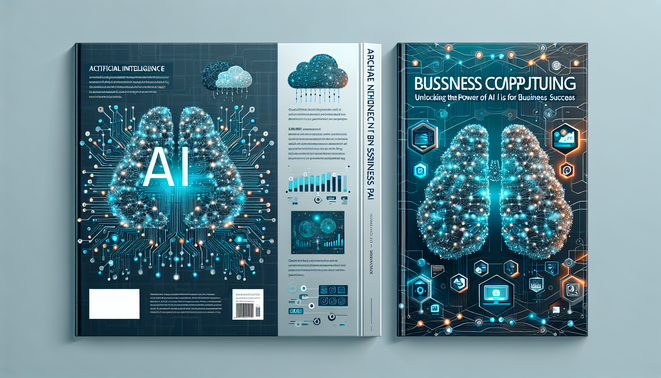Physical Address
304 North Cardinal St.
Dorchester Center, MA 02124
Physical Address
304 North Cardinal St.
Dorchester Center, MA 02124

Comprehensive Guide to Artificial Intelligence in Business and Cloud Computing
Meta Summary:
This comprehensive guide explores the transformative impact of Artificial Intelligence (AI) in business and cloud computing. It delves into AI components such as machine learning, neural networks, and data pipelines, detailing their significance, application, and best practices. The strategic implementation of AI for enhanced operational efficiency, improved customer experiences, and innovation in business processes is also discussed.
Introduction to Artificial Intelligence in Business
Artificial Intelligence (AI) is revolutionizing industries by enabling machines to perform tasks that require human-like intelligence. This includes understanding natural language, recognizing patterns, and making decisions. Businesses leverage AI to enhance operational efficiency and customer experiences.
Technical Explanation:
AI is a broad field encompassing technologies like machine learning, natural language processing, and robotics. Its ability to automate complex processes and personalize customer interactions makes it vital in modern business. For example, AI allows a retail company to enhance customer experience through personalized recommendations, increasing engagement and sales.
Tip: Focus on data quality and ethical considerations for successful AI projects.
Understanding Machine Learning in Business Context
Machine Learning (ML) is a subset of AI focused on developing algorithms that allow computers to learn from data. It processes vast data sets efficiently, uncovering patterns that drive strategic decision-making.
Technical Explanation:
Machine Learning involves creating models from historical data to predict future outcomes. Common algorithms include linear regression, decision trees, and neural networks. These are used in contexts like predicting stock market trends and automating customer support.
Best Practices:
Regularly update your knowledge on AI trends to leverage new technologies.
Introduction to Neural Networks
Neural Networks, inspired by the human brain, are powerful tools in AI for pattern recognition and decision-making. They consist of interconnected nodes (neurons) that process data in layers, enabling complex problem solving.
Technical Explanation:
Neural networks comprise an input layer, hidden layers, and an output layer. Neurons process inputs through an activation function and pass outputs to the next layer. This architecture enables them to learn intricate patterns like those in image and speech recognition.
Note: Continuous monitoring of AI systems is essential to ensure their effectiveness.
Importance of Data Pipelines in AI
Data pipelines manage the flow of data from collection to analysis, ensuring efficient and accurate processing. They provide clean, structured data for machine learning models.
Technical Explanation:
A data pipeline involves stages like data ingestion, processing, storage, and analysis that transform raw data into insights. Effective pipelines handle data from various sources and are crucial for AI applications.
AI and Cloud Services
AI enhances cloud services by offering scalable, efficient, and intelligent solutions. Cloud platforms integrate AI tools for workflow automation, data analysis, and security.
Technical Explanation:
Cloud services use AI to optimize infrastructure management, automate tasks, and enhance analytics. Features like predictive analytics and intelligent data processing help businesses reduce costs and improve service delivery.
Role of AI in Sales and Marketing
AI transforms sales and marketing by automating lead generation and optimizing campaigns. It analyzes consumer behavior to personalize interactions and predict market trends.
Technical Explanation:
AI tools like chatbots and recommendation systems automate customer interactions and tailor marketing strategies. They enable businesses to target the right audience and improve conversion rates.
Tip: Include stakeholders in AI projects to ensure alignment with business objectives.
Strategic Implications of AI in Business
Effective AI implementation can lead to significant ROI and competitive advantage. Businesses need governance strategies to manage AI initiatives ethically and align them with organizational goals.
Technical Explanation:
AI investments improve efficiency and innovation. Success requires data privacy policies, stakeholder engagement, and continuous system evaluation to balance innovation with ethical considerations.
Key Takeaways
AI is transforming industries by automating processes and providing deep insights.
Effective data pipelines are crucial for AI success, ensuring high-quality data supports machine learning models.
AI-driven cloud services enhance scalability and efficiency, while AI tools in sales boost productivity.
Strategic AI implementation requires careful governance for maximizing ROI and addressing ethical considerations.
Glossary
Artificial Intelligence: Machines simulating human cognitive functions.
Machine Learning: Algorithms learning from data for predictions.
Neural Networks: Brain-inspired models for pattern recognition.
Data Pipeline: Steps for processing and analyzing data efficiently.
Knowledge Check
What is the primary function of machine learning? (MCQ)
Explain how data pipelines contribute to AI efficiency. (Short Answer)
List one business benefit of AI-driven cloud services. (Short Answer)
Describe one ethical consideration in AI implementation. (Short Answer)
Visual Aid Suggestions
Flowchart of the AI ecosystem: Illustrate connections between AI components, such as machine learning and neural networks.
Chart depicting a data pipeline’s workflow in AI: Visualize data flow from collection to actionable insights, emphasizing each stage.
Further Reading
AI Platform Overview by Azure
What is Artificial Intelligence by IBM
What is Machine Learning by AWS
This enhanced article is structured using Markdown for easy web publishing and SEO optimization, ensuring accessibility, clarity, and relevance for a professional audience.